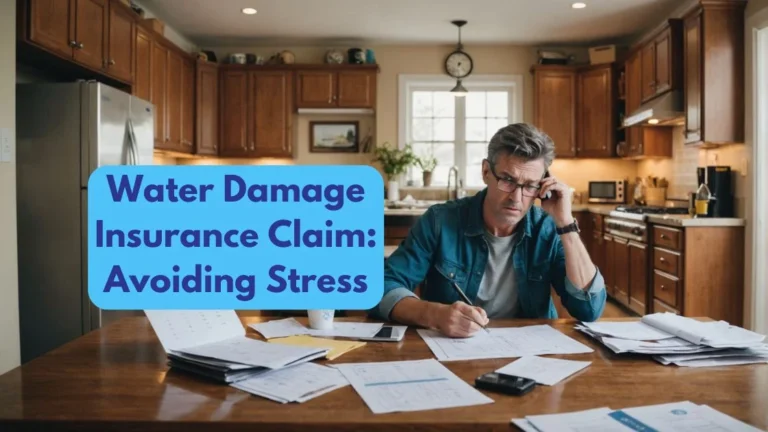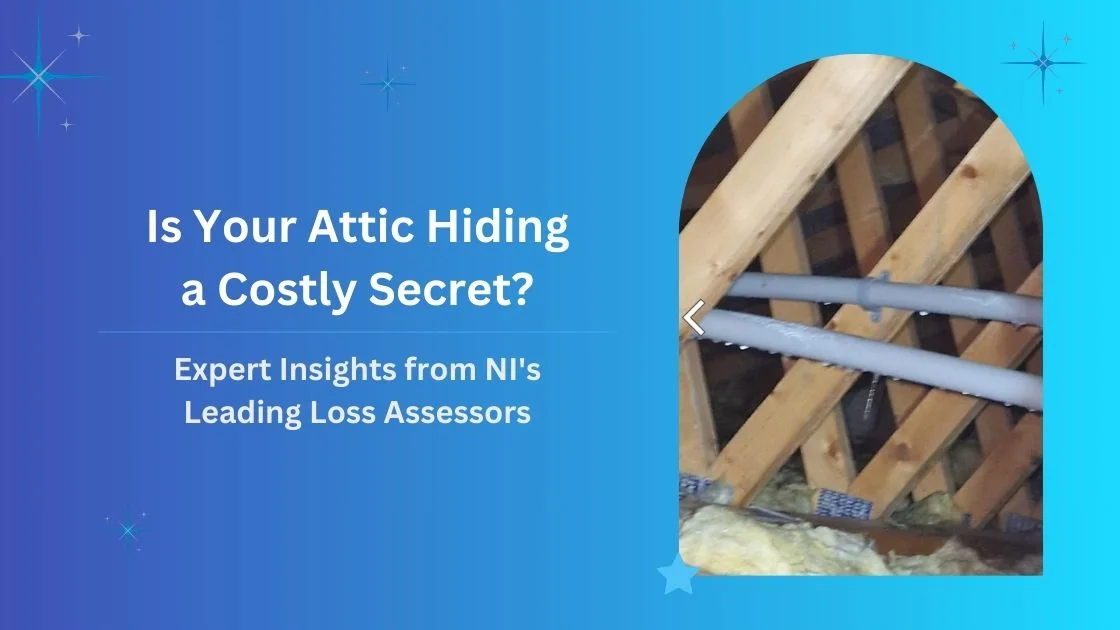Filing an insurance claim for water damage can be a daunting task, filled with paperwork and complex procedures. Understanding these challenges is crucial to ensuring a successful claim. In this post, we explore the common complications you may face when managing a water damage insurance claim and offer tips to navigate the process more smoothly and efficiently.
Key Takeaways
- Understanding policy coverage limits is crucial, as many policies exclude gradual damage, complicating claims for slow leaks or ongoing issues.
- Effective communication with insurers is essential; maintaining detailed records of all interactions can prevent misunderstandings and delays in the claims process.
- Comprehensive documentation of damage, including photographs, videos, and inventories, is vital to support your claim and strengthen your negotiating position.
- Navigating claim terminology, such as Actual Cash Value vs. Replacement Cost Value, can significantly impact your compensation and create confusion during the process.
- The claims process can be overwhelming; consider hiring a public adjuster for assistance if negotiations become too complex or challenging to manage alone.
Understanding Water Damage Types
Understanding the diverse types of water damage is crucial for homeowners and property managers alike, as each category presents distinct challenges and health risks.
Water damage is classified into three categories: clean water, grey water, and black water.
Clean Water
Originates from uncontaminated sources like broken pipes or rainwater; poses minimal health risks.
Grey Water
Contains contaminants from household appliances; may cause discomfort or illness if ingested.
Black Water
Highly contaminated water from sewage or flooding; poses significant health risks and requires professional cleanup.
Understanding these distinctions is crucial for effective management and recovery.
Immediate Steps After Water Damage
Water damage can occur suddenly and with little warning, necessitating immediate action to minimise its impact.
Initially and foremost, ensure the safety of all individuals and pets by evacuating the affected area and turning off electricity to mitigate shock hazards.
Next, conduct a thorough damage assessment by documenting the extent of the damage with detailed photographs and videos, while maintaining an inventory of affected items.
Promptly contact your insurance company to report the incident, providing necessary details such as your policy number and a description of the damage. Learn how to avoid making mistakes in leak claims.
To limit further damage, use towels or buckets for water collection and initiate drying efforts with fans and dehumidifiers.
For extensive damage, engage professional restoration services to ensure compliance with health and safety regulations.
Importance of Documentation
Documenting water damage meticulously serves as an essential step in the insurance claims process, greatly impacting the outcome of your claim. Comprehensive documentation provides critical claim support, serving as concrete evidence that can validate the extent of your losses.
Detailed photographs and videos, alongside an inventory of damaged items with purchase receipts, enhance evidence organisation and strengthen your case. It is also imperative to keep records of all communications with your insurance company, noting dates and details to track claim progress.
Furthermore, maintaining assessments, repair estimates, and correspondence with restoration professionals offers a clear picture of the damage. Remember, do not discard damaged items until after an insurance inspection, as they may be necessary for verification and assessment.
Understanding Insurance Policies
In relation to insurance policies, familiarity with the specific terms and provisions is essential for homeowners facing water damage claims.
Understanding your policy type allows for effective policy comparisons, revealing how different plans address sudden water damage versus gradual damage, which is often excluded.
Many homeowners’ insurance policies cover damages from burst pipes or appliance failures; however, flooding from natural disasters necessitates separate flood insurance.
Furthermore, grasping claim terminology, particularly the distinction between Actual Cash Value (ACV) and Replacement Cost Value (RCV), is vital, as it directly impacts compensation amounts.
Thorough documentation of all interactions and repairs further aids in navigating your policy and ensuring a successful claims experience.
Claim Filing Process
The claim filing process for water damage begins with comprehensive documentation of the affected areas, providing essential evidence for your insurer.
Understanding your policy coverage limits is vital, as it directly impacts the outcome of your claim.
Effective communication with your insurance provider throughout this process will enhance your chances of a satisfactory settlement.
Documenting Water Damage Evidence
Capturing evidence of water damage is a critical step in the insurance claim process. Using effective photographic techniques, you should document the damage meticulously, ensuring to capture:
- High-quality images of affected areas, including close-ups that highlight specific destruction.
- Videos that provide context and a comprehensive view of the entire space.
- An inventory list detailing damaged items, noting their purchase date, cost, and condition.
Maintain thorough records of all communications with your insurer, documenting dates and discussions.
Avoid discarding any damaged items until after the insurance adjuster has completed their assessment.
Understanding Policy Coverage Limits
Understanding policy coverage limits is essential for navigating the complexities of water damage insurance claims. Most home insurance policies cover sudden water damage from pipes or appliances but often exclude gradual damage and neglect.
Familiarising yourself with the specifics of your policy, including Actual Cash Value (ACV) versus Replacement Cost Value (RCV), is imperative, as it directly influences your compensation for damaged items.
Moreover, be mindful that standard home insurance typically does not cover flood-related damages, necessitating separate flood insurance.
Carefully reviewing your policy’s coverage exclusions is important, as claims may be denied if the damage is not linked to an insured event.
Promptly notifying your insurer about any water damage is key to maintaining your claim eligibility.
Learn more: Understanding Home Insurance Claims in NI.
Communicating With Insurers Effectively
Effective communication with your insurer is a pivotal component of the claims filing process following water damage.
Establishing effective dialogue through proactive communication can greatly enhance your experience. Here are key steps to ensure clarity:
- Promptly report the damage, providing essential details such as your policy number and a description of the incident.
- Document everything: Capture photographs, videos, and maintain an inventory of affected items and receipts.
- Stay engaged: Be available for the claims adjuster, ready to discuss your findings and concerns.
Moreover, maintain a record of all communications, including dates and summaries, to support your claim.
Negotiating With Insurers
Negotiating with insurers is a crucial step in securing a fair settlement for water damage claims.
A solid understanding of your policy coverage, including the differences between Actual Cash Value and Replacement Cost Value, will greatly influence the outcome of your negotiations.
Furthermore, thorough documentation of damage and repair estimates will strengthen your position, ensuring that you advocate effectively for the compensation you deserve.
Understanding Policy Coverage
Navigating the complexities of water damage insurance claims necessitates a thorough understanding of your policy’s coverage details.
Grasping the intricacies of your coverage is crucial for effective negotiations with insurers. Keep the following aspects in mind:
- Policy exclusions: Be aware of what your policy does not cover, particularly concerning gradual water damage.
- Coverage limits: Familiarise yourself with the maximum amounts your policy will pay out to avoid surprises during the claims process.
- ACV vs. RCV: Understanding the difference can significantly impact your settlement, making it essential to know how your insurer values your loss.
Documenting Damage Evidence
Once you have a solid understanding of your policy coverage, the next step in managing water damage insurance claims is to meticulously document the damage.
Begin with a comprehensive damage assessment by capturing clear photographic evidence and videos of all affected areas, ensuring that the date and time are visible.
Maintain a detailed inventory of damaged belongings, including descriptions, purchase receipts, and estimated values to substantiate your claim.
Record all communications with your insurance provider, noting dates, names, and summaries of discussions to bolster your case.
Document emergency repairs and mitigation efforts immediately, as insurers often require this information.
Ultimately, use a written log to track the progression of the damage and repairs, providing a clear timeline to strengthen your negotiating position with insurers.
Preparing for Negotiations
Navigating the complexities of water damage insurance claims requires a strategic approach to negotiations with insurers.
To enhance your claim strategy, consider the following negotiation tactics:
- Understand your coverage: Distinguish between Actual Cash Value (ACV) and Replacement Cost Value (RCV) to accurately assess your claim.
- Document everything: Gather comprehensive evidence, including photographs, repair estimates, and communication records, to solidify your negotiating position.
- Negotiate assertively: Be prepared for initial offers that fall short of your rightful claim; don’t hesitate to push back.
Familiarise yourself with your policy details, and if negotiations become overwhelming, seek assistance from a public adjuster or solicitor.
This preparation not only empowers you but fosters a sense of community in navigating these challenges together.
Got a Leak?
Don’t Freak—Northern Ireland’s Leak Detectives to the Rescue!
Don’t let a hidden leak turn into a costly nightmare. Our expert team uses cutting-edge technology to find and fix leaks fast. Contact us today and safeguard your home!



